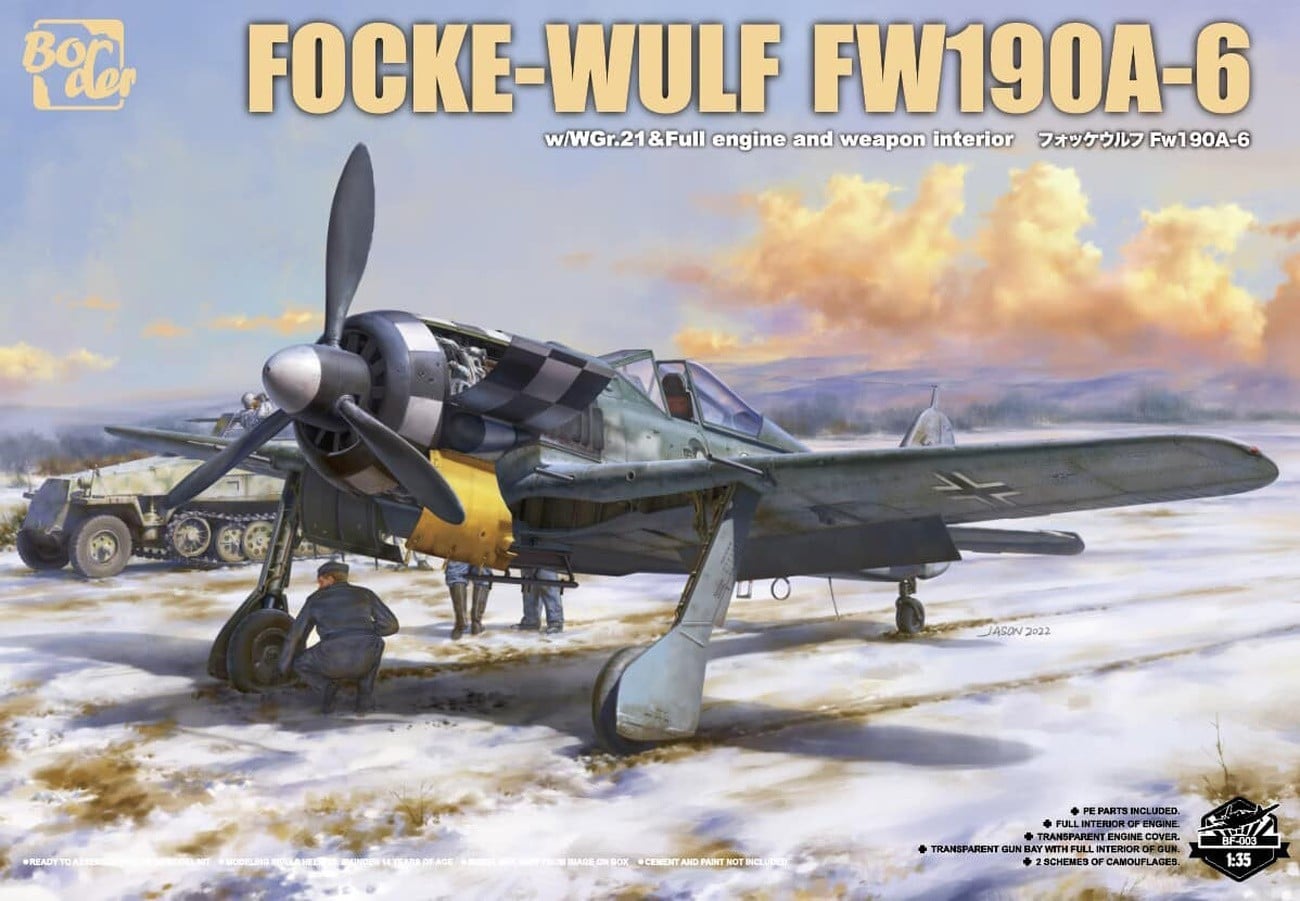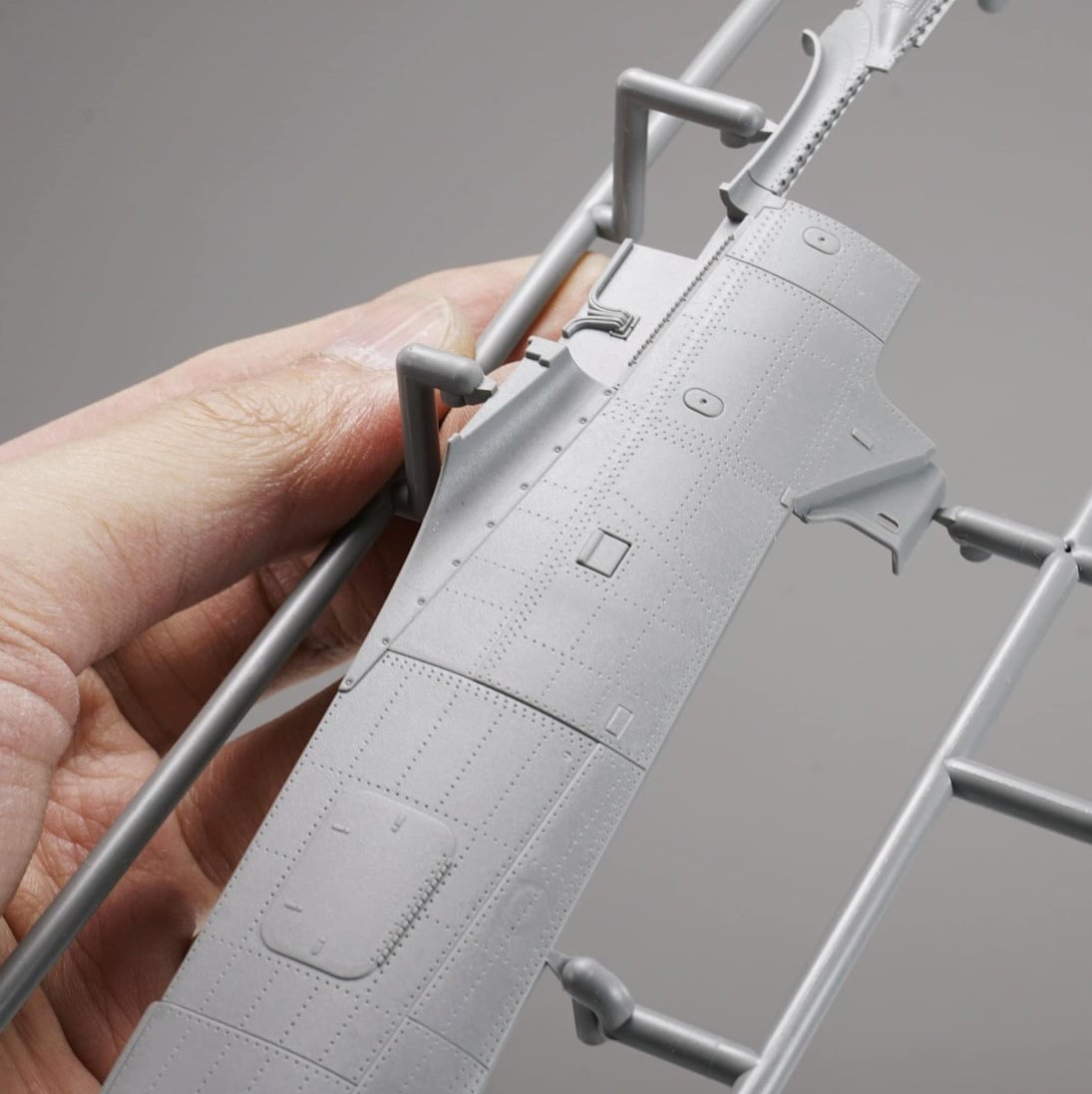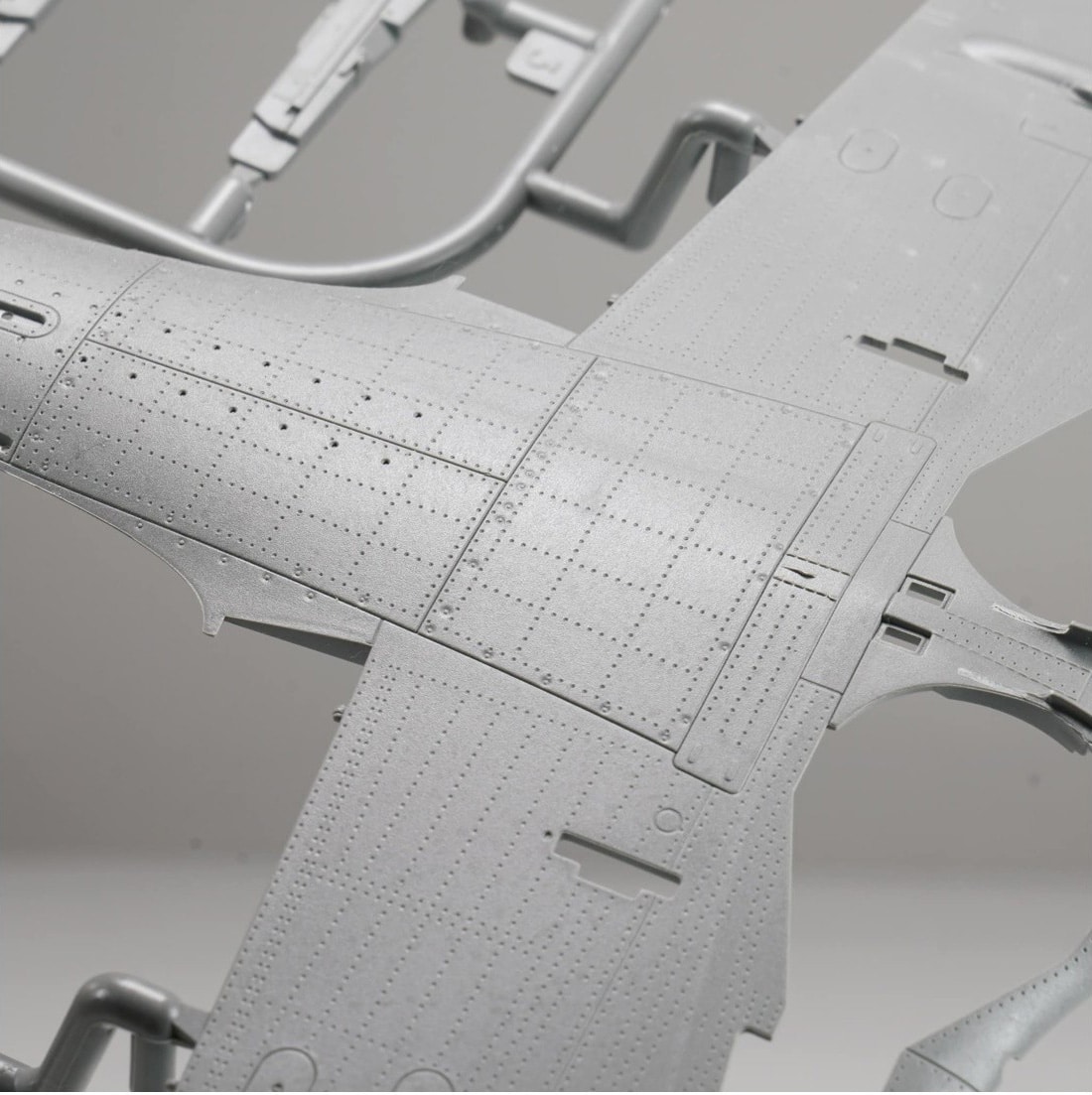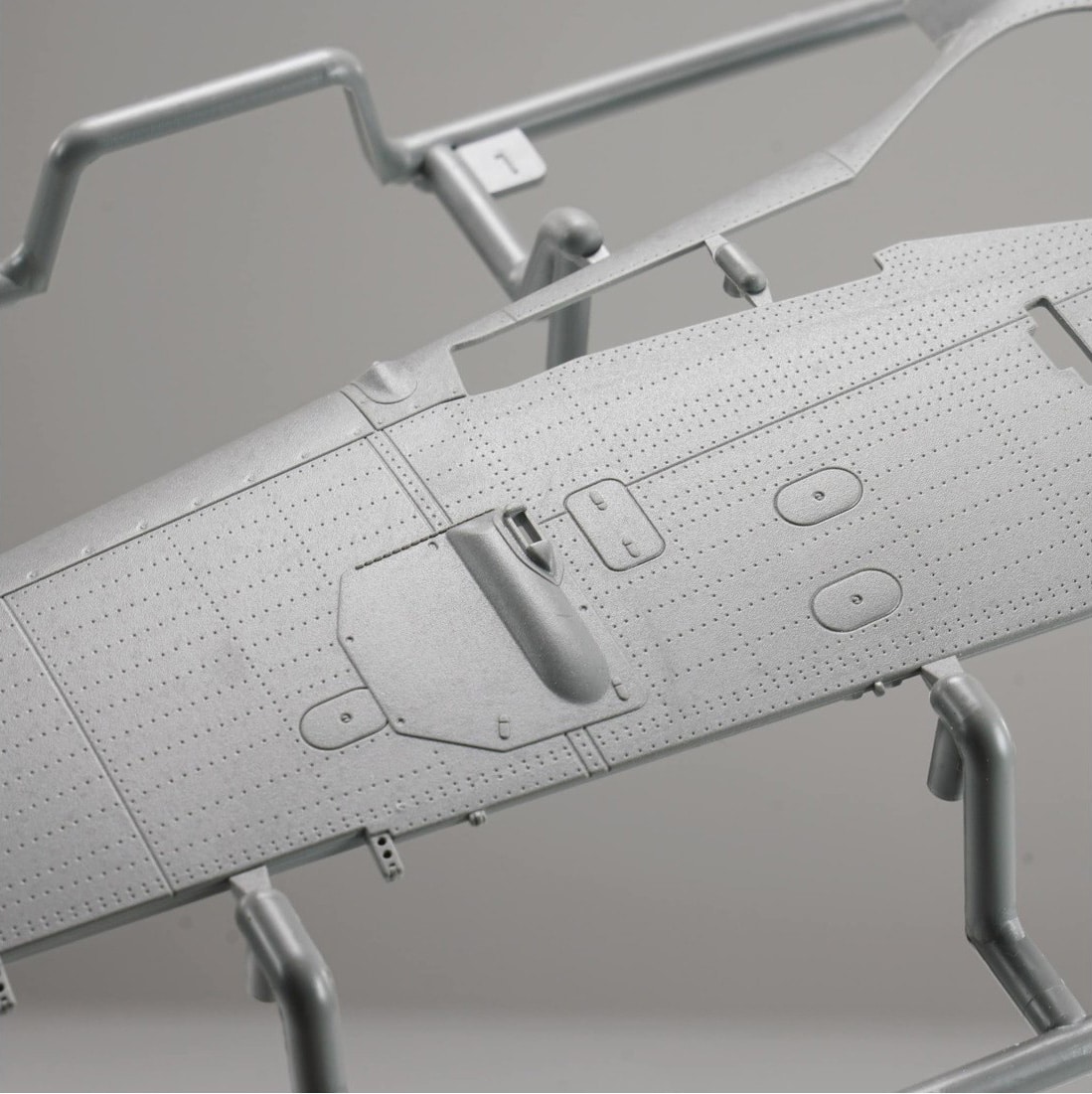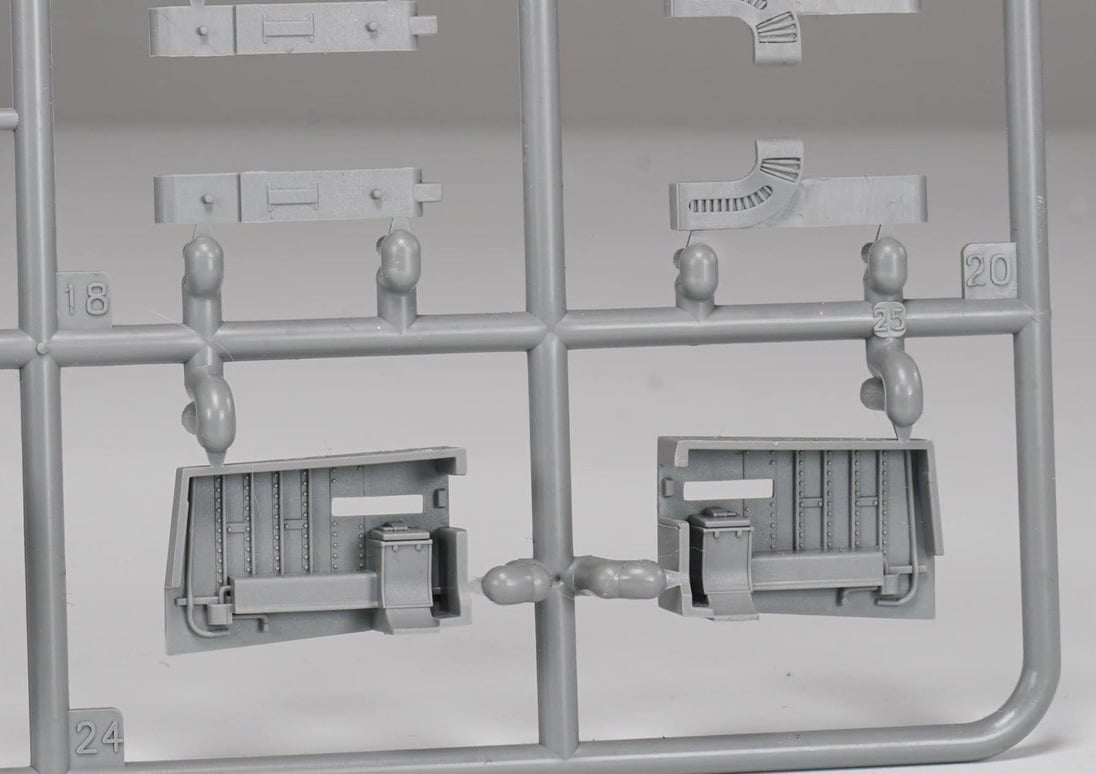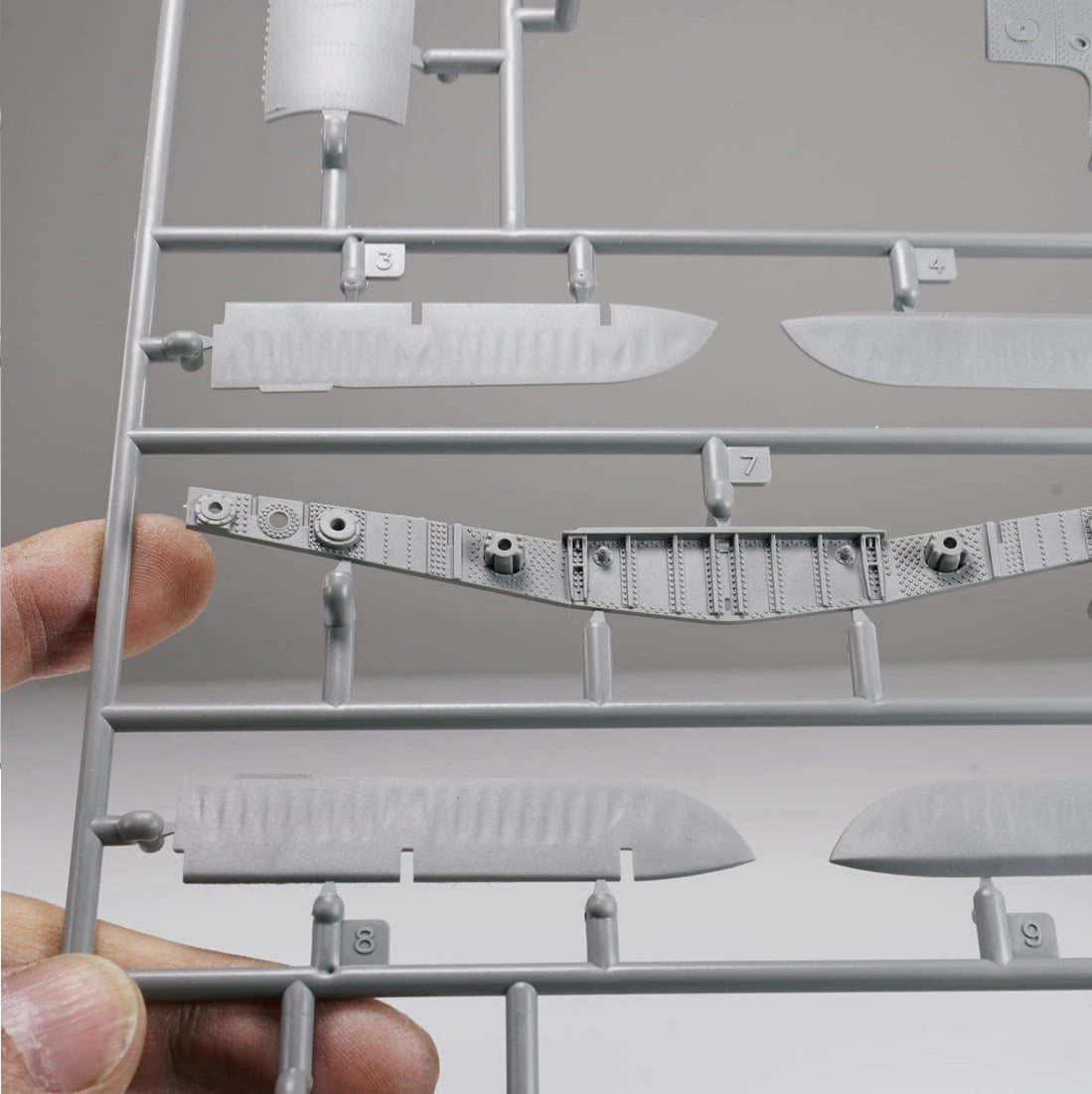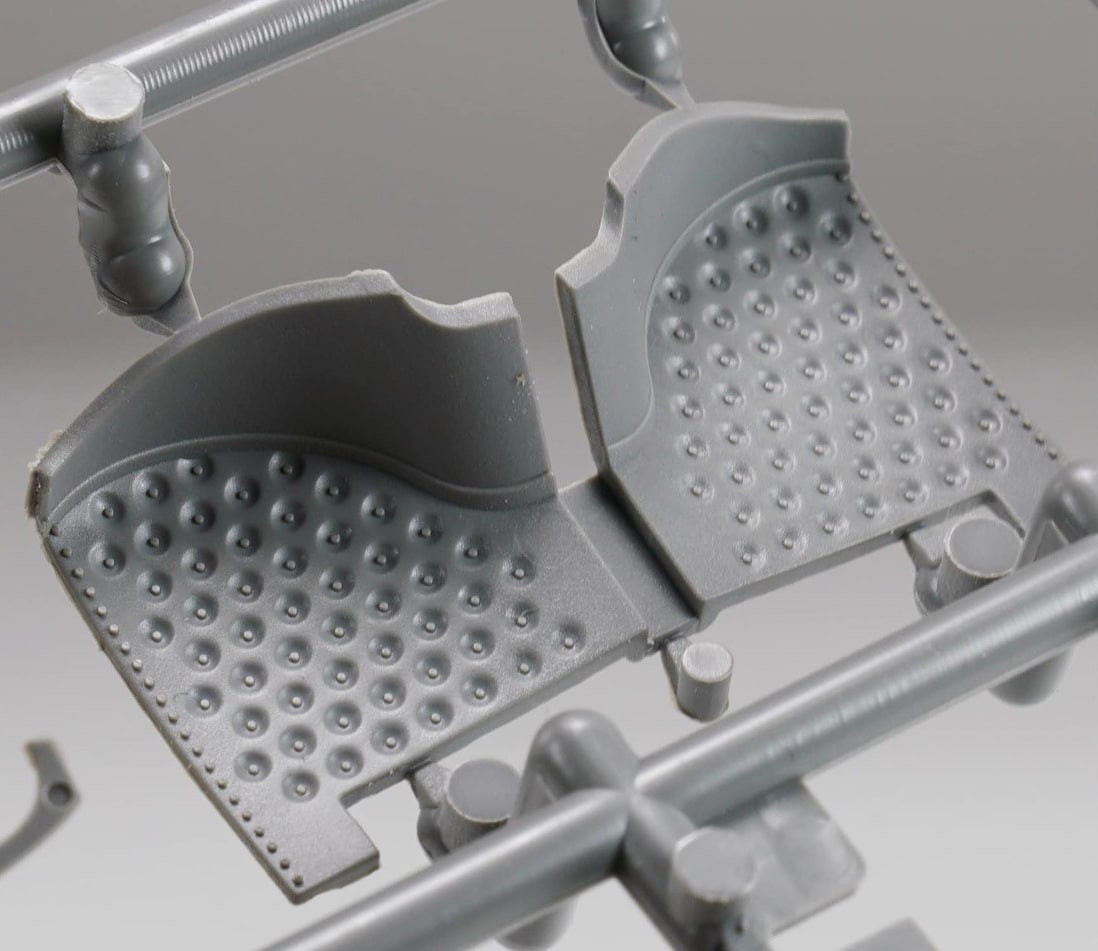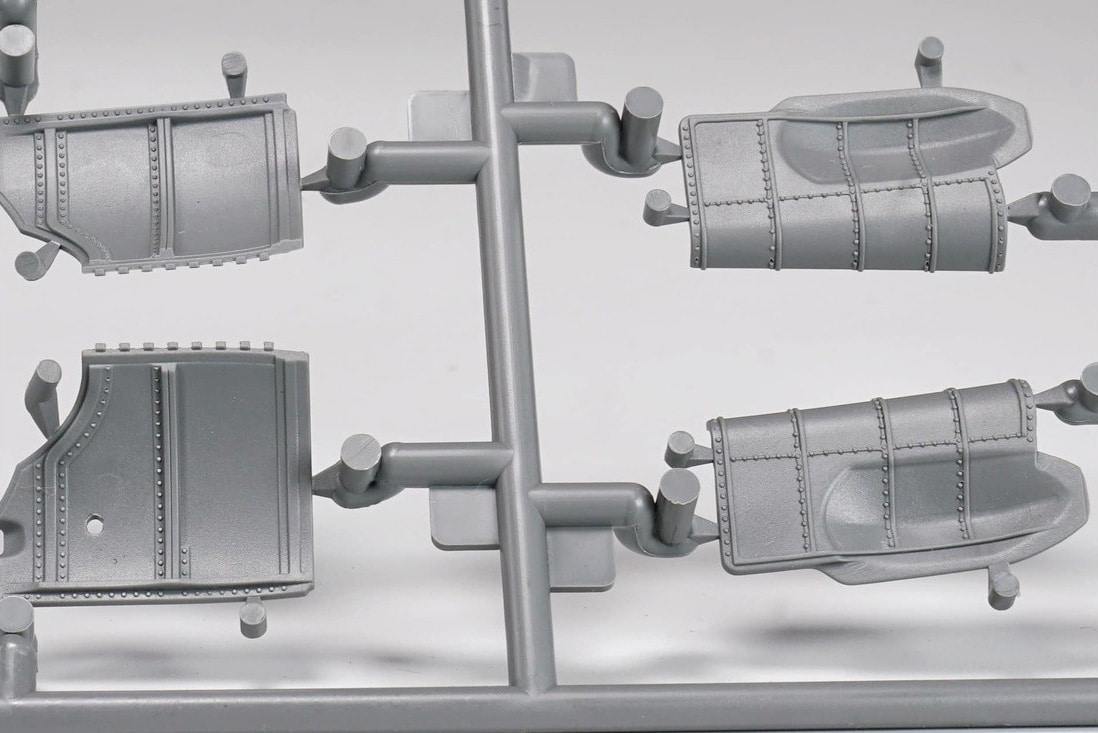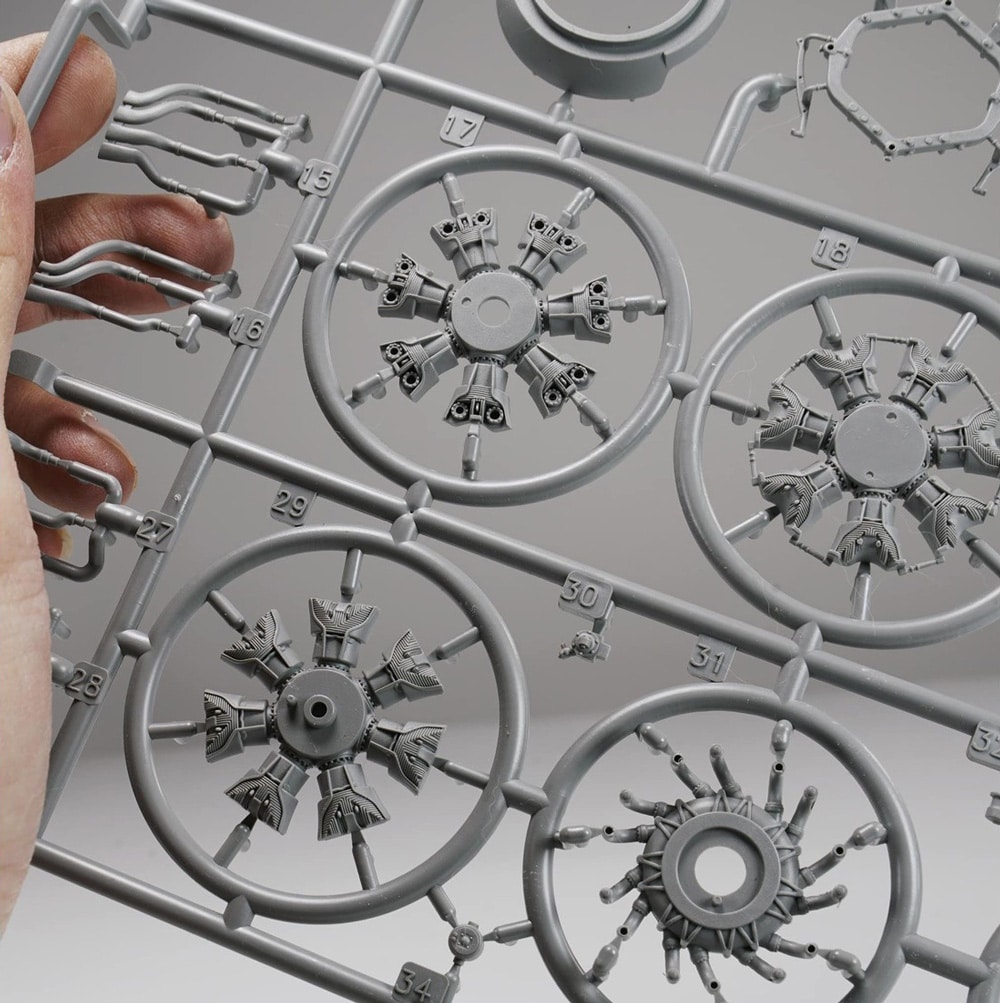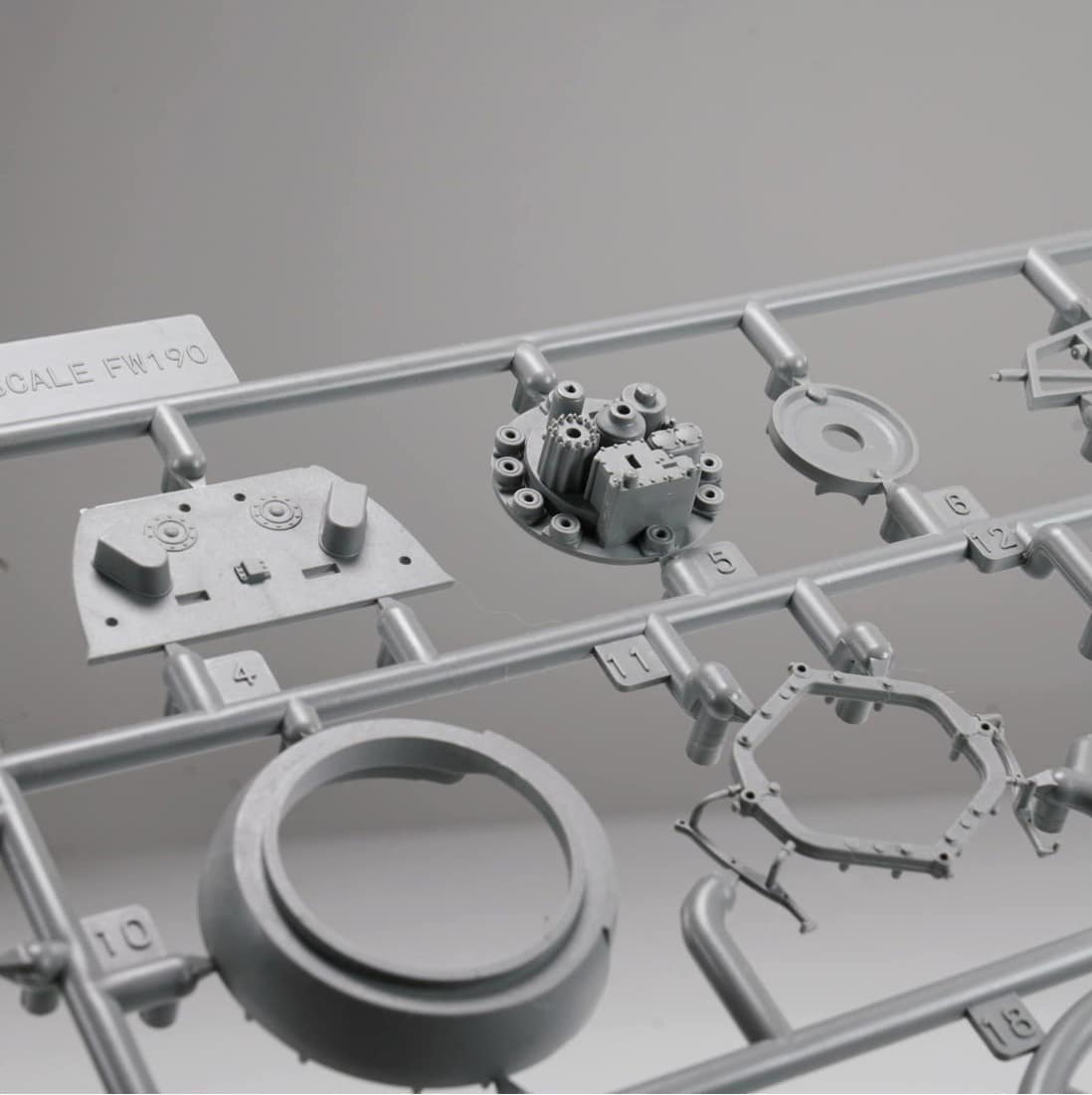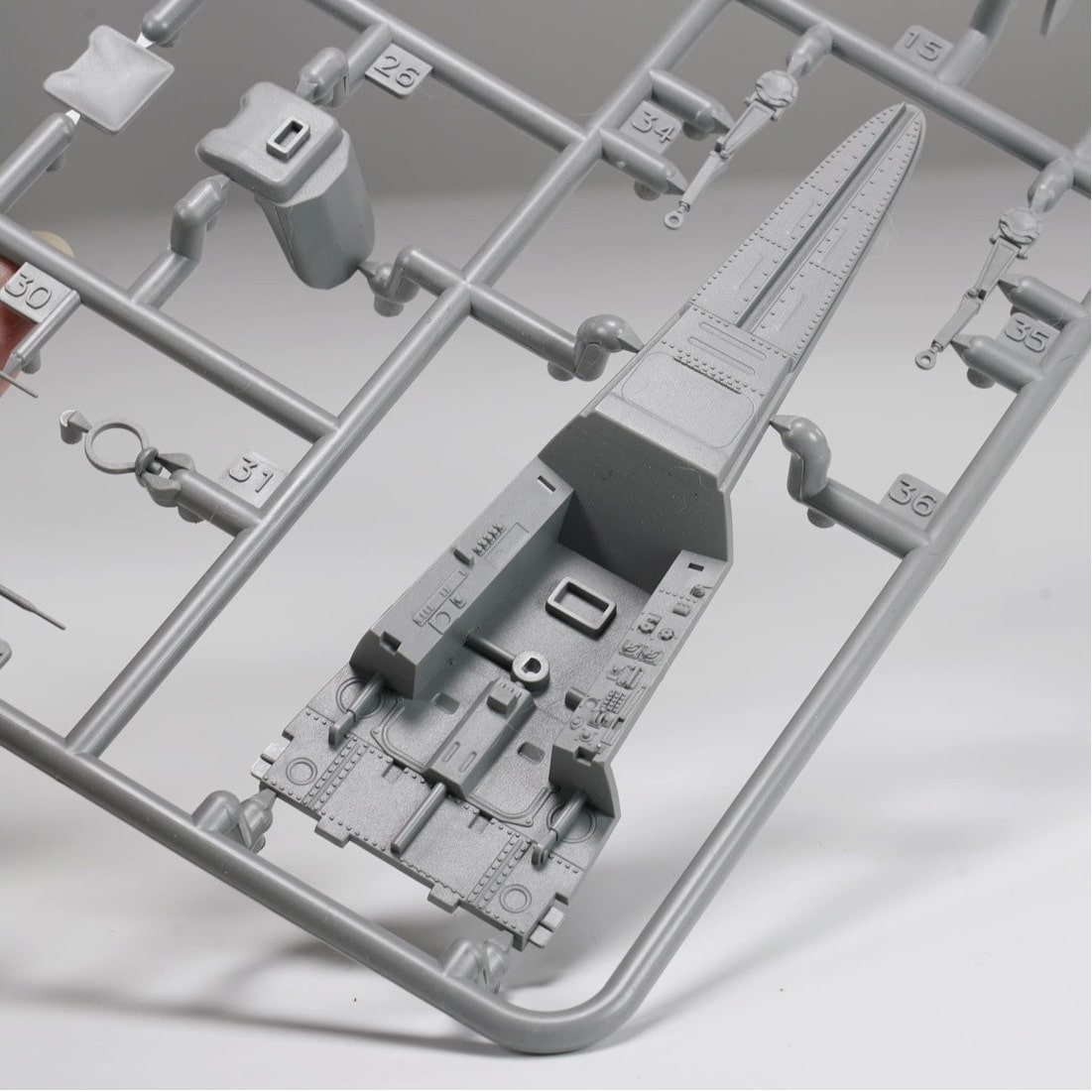Border Models 1:35 scale Fw 190 A-6 Test Shots
Border Models recently shared test shots of sprues for their upcoming 1:35 scale Fw 190 A-6 model on their official Facebook page.
Border models new 35th scale Fw-190A6 2 photo: https://hobbyzero.com/news/border-model-comes-new-35th-scale-fw-190/
BF003 – Focke Wulf Fw 190 A-6 – 1:35
- Border-Models-Fw-190-A-6-Test-Shots–2
Focke Wulf Fw 190 A-6:
The Focke-Wulf Fw 190 A-6 was a German single-seat fighter aircraft used by the Luftwaffe during World War II. It was one of the most important aircraft of the German military, as it played a significant role in their efforts to maintain air superiority during the war. This article will provide a comprehensive guide on the Focke-Wulf Fw 190 A-6, covering its history, specifications, performance, and more.
History
The Fw 190 A-6 was a variant of the Focke-Wulf Fw 190 fighter aircraft that was developed in the early 1940s. The Fw 190 was designed by Kurt Tank and was initially introduced in 1941. The A-6 variant was introduced in 1943 and was produced until the end of the war.
The Fw 190 A-6 was designed to be a versatile fighter aircraft that could perform a variety of roles, including air superiority, ground attack, and fighter-bomber missions. It was equipped with a powerful BMW 801D-2 radial engine that provided it with excellent speed and climbing ability.
Specifications
The Focke-Wulf Fw 190 A-6 had a wingspan of 10.5 meters, a length of 8.95 meters, and a height of 3.96 meters. It had a maximum takeoff weight of 4,470 kg and was equipped with a 14-cylinder BMW 801D-2 radial engine that provided it with a maximum speed of 590 km/h at 6,200 meters. It had a range of 800 km and a service ceiling of 11,000 meters.
Armament
The Fw 190 A-6 was equipped with four 20mm MG 151/20 cannons and two 13mm MG 131 machine guns. It could also carry a variety of bombs and rockets for ground attack missions.
Performance
The Focke-Wulf Fw 190 A-6 was a highly maneuverable aircraft that was able to outperform many of its contemporaries. It was able to climb quickly and had a top speed of nearly 600 km/h. Its armament made it a formidable opponent in air-to-air combat, and its versatility made it an effective ground-attack aircraft.
What were the Negative aspects of the Focke-Wulf Fw 190 A-6?
While the Focke-Wulf Fw 190 A-6 was a highly capable and effective fighter aircraft for its time, it did have some negative aspects that affected its performance and reliability.
One significant drawback of the Fw 190 A-6 was its relatively short range, which limited its operational capabilities, particularly during long-range missions. This was partly due to its small fuel tanks, which could only hold a limited amount of fuel. As a result, the aircraft had to rely on external fuel tanks, which increased its weight and reduced its maneuverability.
Another negative aspect of the Fw 190 A-6 was its relatively poor visibility, which was partly due to the aircraft’s design. The cockpit was located far forward on the fuselage, which made it difficult for pilots to see directly below them. Additionally, the thick wings and fuselage of the aircraft obstructed the pilot’s view to the sides and rear, making it difficult to spot enemy aircraft during combat.
The Fw 190 A-6 was also prone to overheating, which was a result of its powerful BMW 801 engine. This issue was particularly problematic during the hot summer months, as the engine’s cooling system struggled to keep up with the high temperatures. As a result, the engine was prone to stalling, which could be catastrophic during combat.
Finally, the Fw 190 A-6 was relatively difficult to maintain, which made it challenging to keep the aircraft operating in the field. Its complex and intricate engine and mechanical systems required a high degree of skill and expertise to maintain, and replacement parts were often in short supply.
Despite these negative aspects, the Fw 190 A-6 was still a formidable aircraft that played a significant role in the air war over Europe during World War II. Its speed, maneuverability, and firepower made it a challenging opponent for Allied fighters, and it was widely feared by Allied pilots.
September Preview: Revells Newest Models: https://hobbyzero.com/news/september-preview-revells-newest-models/
You may want to read articles on different models that may interest you:
MiniArt 1:35 Focke Wulf C30A Heuschrecke Late production

